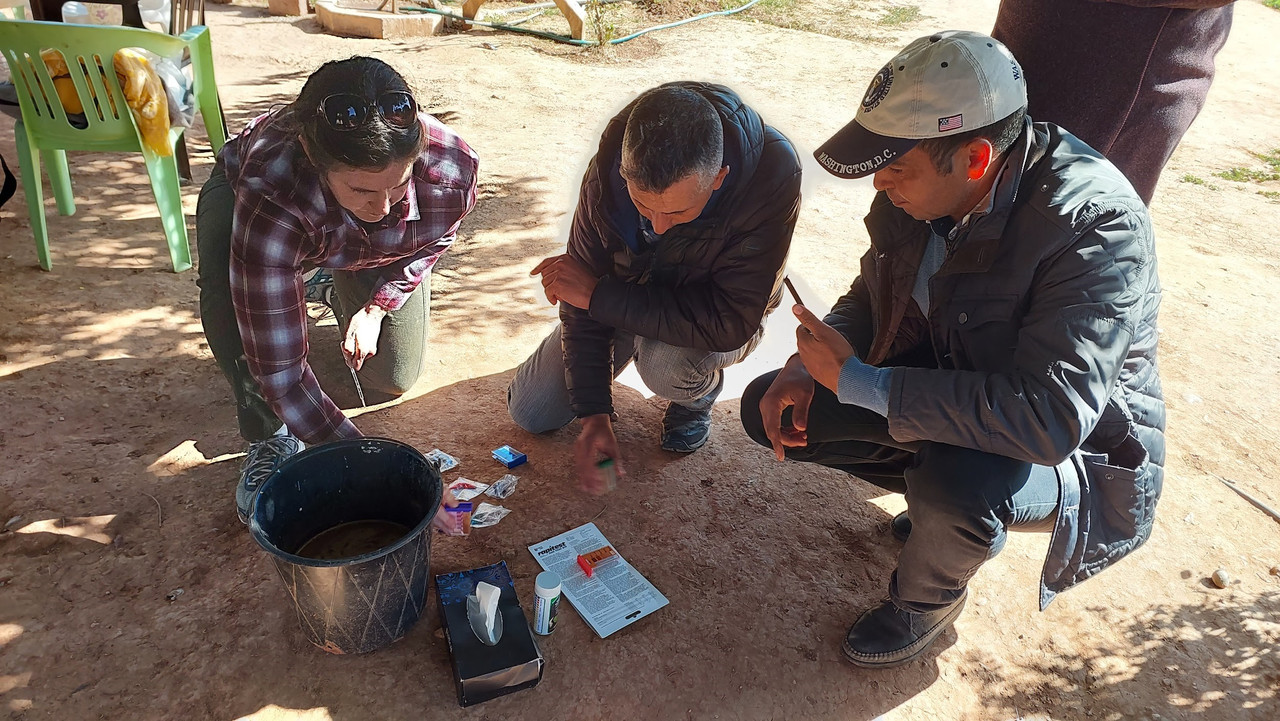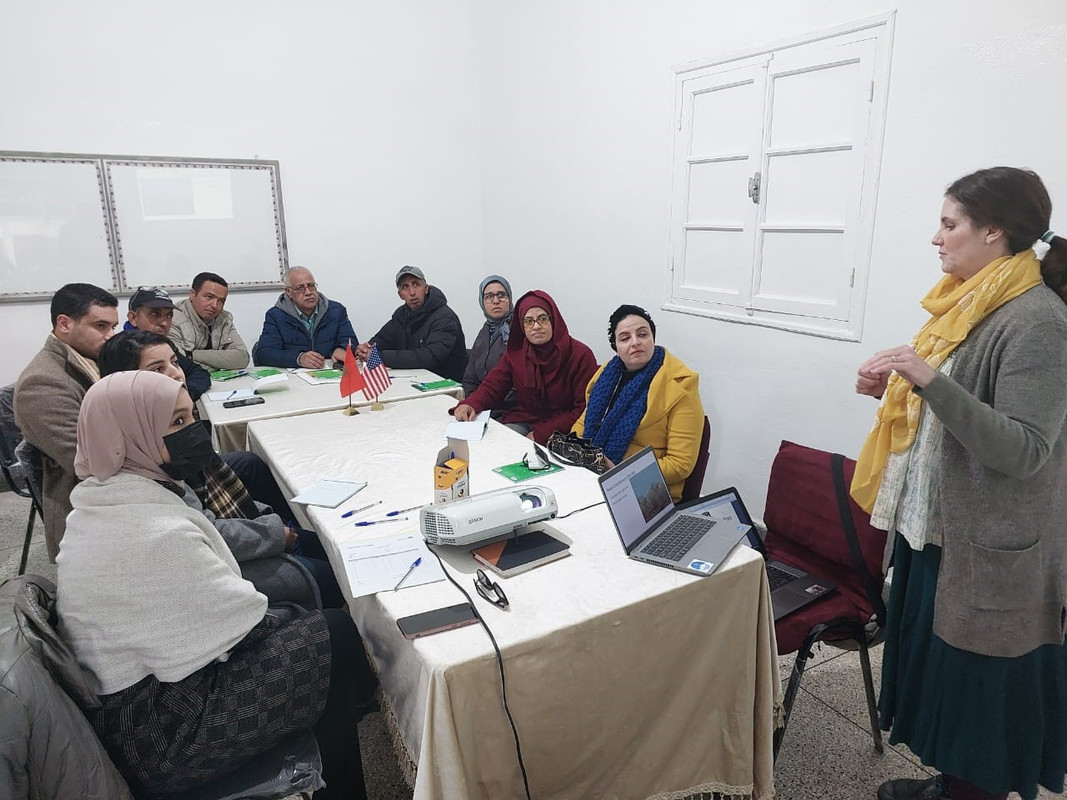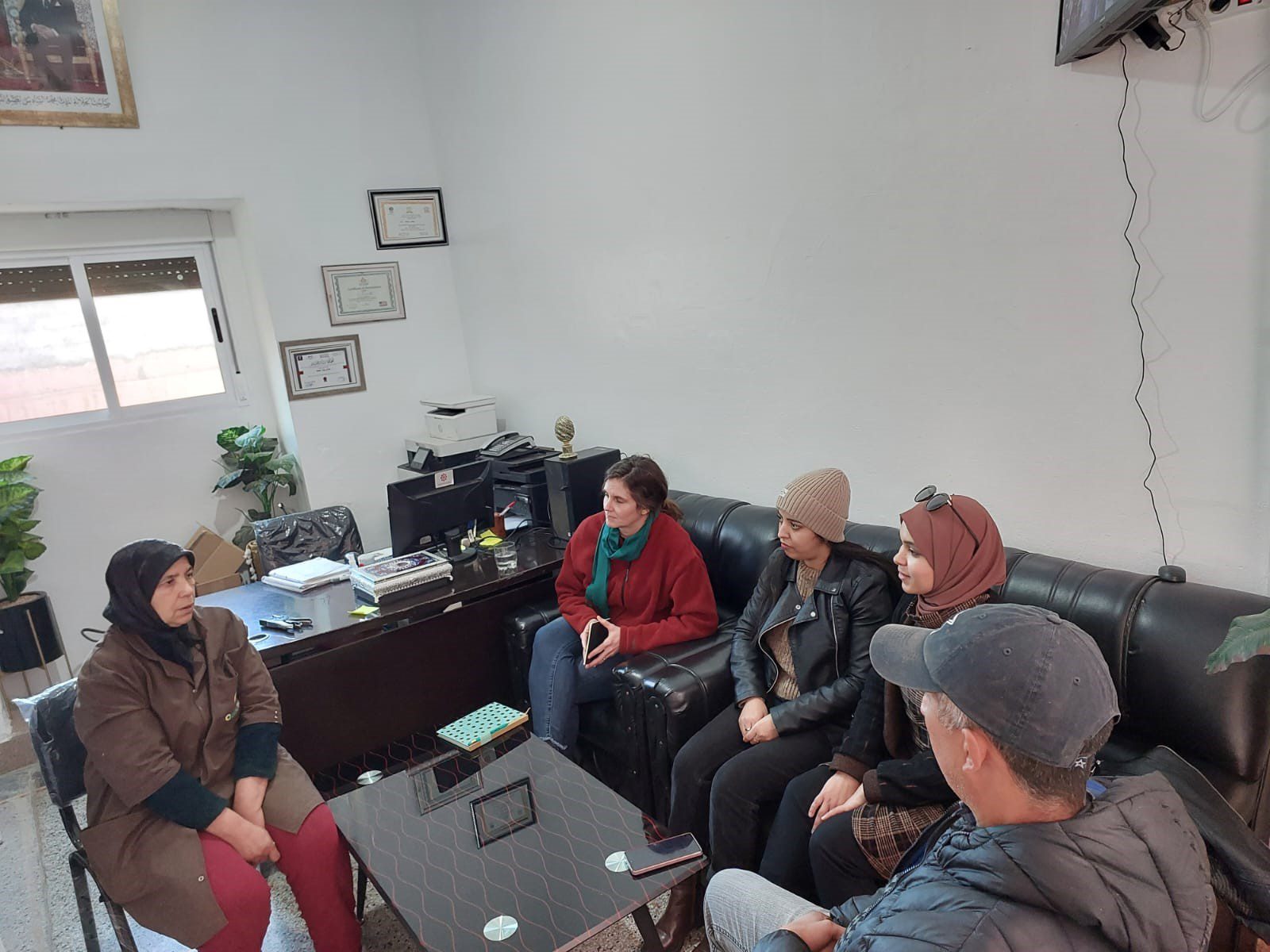Jennifer Anne Sopoci
F2F US Volunteer

During the theoretical part of the Climate-Smart Agriculture training course.
Photo Credit: HAF
On February 2, we conducted the workshop for approximately 3 hours. We spent the first half of the workshop discussing the basics of climate change, global warming, and agriculture’s role in the production and sequestration of carbon in the atmosphere. The participants provided examples of how they are seeing climate change locally and we looked at regional examples of drought, pollination phase disruption, flash floods, and soil erosion. We looked at the effects this is having on food and water security for a growing population. We also touched on the specifics of climate change effects on agriculture through drought.
The second half of the workshop we focused on solutions and adaptations. We looked at innovative examples of reducing soil erosion by observing mineral migration, and the ICARDA developments of drought-resistant wheat seeds. We recalled the organic farming principles discussed during my visit in 2021 and how many of the same practices are present in CSA.
We focused on the many benefits and types of cover crops and the pros and cons of each. We discussed the specifics of no or less till agriculture and the importance of disturbing the soil as little as possible for maintaining soil health, increasing soil moisture retention, reducing soil erosion, and sequestering carbon. We talked together about the importance of crop rotation, drought-resistant crops and endemic plants, and seed saving from year to year.
We spoke about soil testing to understand nutrient deficiencies and what can be planted or added to the soil to improve crop yield. Finally, we discussed strategies for managing water resources with more focused watering through drip irrigation and critical times for watering in plant and tree development. We also touched on the increase in good development and how it affects groundwater availability for all.
Attending the workshop was Hassan Aguermousse, the regional director of the Department of Agriculture, who was able to provide the attendees with specific information about drip irrigation incentives from the government of Morocco, and more specific information about wells and their effects. I then shared the seed packets donated by the Michigan Master Gardner’s Association.
On February 3 we began the day by visiting the Olive Cooperative Taymate in Timoulilte Commune. Many of the cooperative members were unable to attend the workshop the day before and were interested in learning about our discussion that day. We briefly discussed climate change and then focused our discussion on the CSA principles of cover cropping, no or less till agriculture, crop rotations, drought-resistant crops, plants, and endemic species. This group had also heard of “sandwich gardening” and was interested in learning more about that method. I have some experience with the layered concept of this method but have never seen it employed on a large scale. This method could work well for small vegetable plots.
After the visit to the cooperative, we visited the local farm of Si Brahim in Afourar, who had attended the workshop the day before. We were particularly interested in his farm because he has a solar-powered well, successful crops, and diverse tree species. At Brahim’s farm, we collected a soil sample and did a nutrient and pH analysis with the test provided by the University of Arizona. We spoke about how these tests are meant to give an idea of nutrient levels in the soil, but will not give you an exact amount. These types of tests could be easier for farmers to give them an idea of levels several times throughout the year.

Conducting field tests of composite soil samples on farms to determine nutrient levels and pH ideally before planting. Photo Credit: HAF
Although OCP offers free soil tests, the barrier for farmers appears to be the cost and logistics of shipping as well as the time waiting for results. However, we discussed the importance of knowing the exact levels at least once every 2-5 years. There was some trial and error with the tests and we may not have gotten an accurate reading, but it appears that the area we tested was slightly acidic and lacking nitrogen.
We focused on how to obtain a more accurate reading for future tests by collecting a composite sample over 5-7 spots per hectare, and mixing them together with distilled or non-mineral water at a ratio of 5 parts water to one part soil. The mixture must then settle for at least one hour before transferring the water on top into the analysis tubes. I left all the testing supplies with Aziz for distribution as needed. More supplies will be needed.






